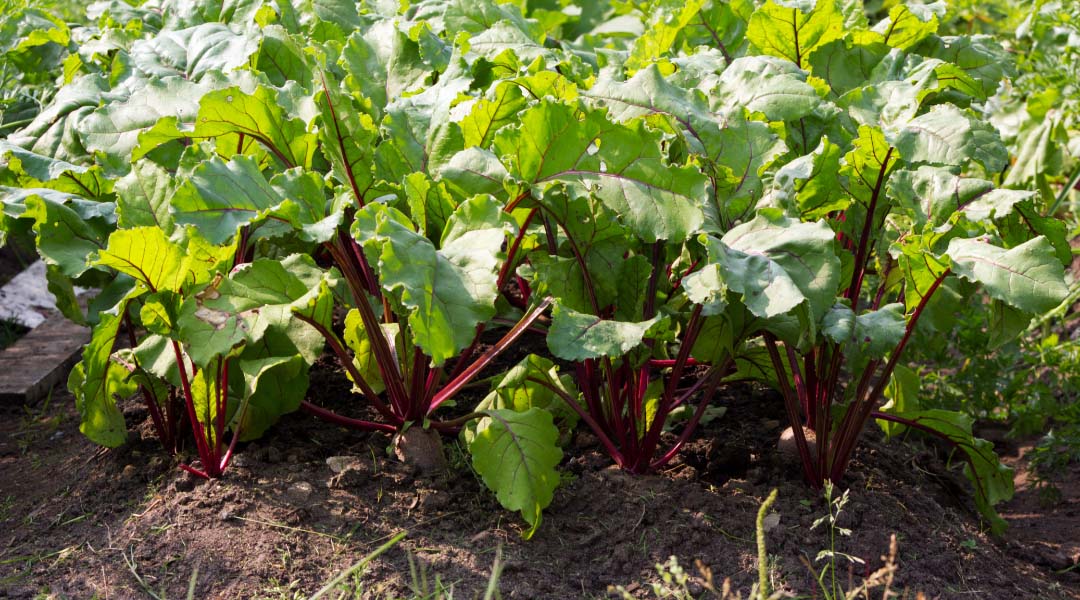Growing radishes at home is not just a rewarding experience but also a great way to enjoy fresh, crispy, and nutritious vegetables straight from your garden. Radishes are one of the easiest vegetables to grow, making them an ideal choice for beginners. Whether you have a sprawling garden or a small balcony, radishes can thrive with minimal effort. In this detailed guide, we’ll walk you through everything you need to know to grow radishes at home successfully.
Importance of Growing Radish at Home
Growing your radishes offers several benefits beyond just the joy of gardening. Radishes are packed with nutrients, including vitamin C, potassium, and fiber, making them a healthy addition to your diet. Homegrown radishes also taste better than store-bought ones since you can harvest them at the peak of freshness. Moreover, radishes are known for their quick growth, usually maturing in just 3-4 weeks, allowing you to enjoy the fruits (or in this case, the roots) of your labor in a short time.
Overview of Radish Varieties
Before diving into the planting process, it’s essential to understand the different radish varieties available. Some of the most popular varieties include:
Cherry Belle: The classic red radish with a mild, crisp flavor, ideal for salads.
French Breakfast: An elongated radish with a sweet, mild taste and a striking red and white color.
Daikon: A large, white radish commonly used in Asian cuisine, known for its mild flavor and crunchy texture.
Each variety has unique characteristics, so choose the one that best fits your taste preferences and culinary needs.
Choosing the Right Location
Radishes need plenty of sunlight to grow well. Choose a location in your garden or balcony that receives at least 6 hours of direct sunlight each day. If you’re growing radishes indoors, place them near a sunny window or use a grow light to ensure they get enough light. Radishes also prefer well-drained soil, so avoid areas that tend to hold water.
Preparing the Soil
Radishes thrive in loose, well-drained soil rich in organic matter. Start by testing your soil’s pH level, aiming for a slightly acidic to neutral range of 6.0 to 7.0. If your soil is too acidic, you can add lime to balance the pH. Before planting, loosen the soil to a depth of 12 inches and mix in compost or well-rotted manure. This will improve soil texture, provide essential nutrients, and promote healthy root development.
Selecting the Right Containers (for Indoor Growing)
If you don’t have access to garden space, growing radishes in containers is an excellent alternative. Choose containers that are at least 6-8 inches deep to accommodate the radish roots. Ensure the containers have drainage holes to prevent waterlogging. Clay, plastic, or fabric pots work well for radishes.
Planting Radishes
Sowing Seeds
Radishes are best grown from seeds sown directly into the soil or containers. To plant radish seeds, follow these steps:
Spacing: Sow the seeds about 1 inch apart in rows. If you’re planting multiple rows, space them about 6 inches apart.
Depth: Plant the seeds ½ inch deep, covering them lightly with soil.
Thinning: Once the seedlings sprout and reach about 2 inches tall, thin them out to leave about 2-3 inches of space between each plant. Thinning is crucial to give each radish enough room to grow without competing for nutrients.
Watering and Fertilizing
Radishes need consistent moisture to develop well. Water the plants regularly, keeping the soil evenly moist but not waterlogged. Overwatering can cause the roots to rot, so be careful not to overdo it. After the seeds have germinated and the plants are established, you can apply a light dose of balanced fertilizer or compost to promote healthy growth.
Companion Planting
Companion planting is a technique where certain plants are grown together to benefit each other. Radishes grow well alongside carrots, lettuce, and beans. These companions can help deter pests and improve soil health. However, avoid planting radishes near hyssop, as this plant can inhibit their growth.
Caring for Radishes
Mulching and Weed Control
Mulching around your radish plants helps retain soil moisture and suppress weeds. Organic mulches like straw, leaves, or grass clippings work well. Mulch also helps regulate soil temperature, keeping the roots cool in hot weather. Regular weeding is essential, as weeds can compete with radishes for nutrients and water.
Pest and Disease Management
Radishes are generally hardy, but they can fall prey to pests like flea beetles and aphids. Flea beetles create small holes in the leaves, while aphids can cause wilting by sucking sap from the plants. To manage these pests, use organic solutions like neem oil or diatomaceous earth. Radishes are also susceptible to root rot, a fungal disease caused by waterlogged soil. To prevent this, ensure proper drainage and avoid overwatering. Crop rotation is another effective strategy to prevent soil-borne diseases.
Monitoring Growth
Regularly monitor your radish plants for signs of growth and potential issues. Radishes mature quickly, so keep an eye out for signs of readiness. Healthy radish plants should have firm, round roots peeking slightly above the soil. If you notice your radishes starting to flower (bolting), it’s a sign that the plants are under stress, possibly due to high temperatures or inconsistent watering.
Harvesting Radishes
Knowing When to Harvest
Timing is crucial when harvesting radishes. Most radish varieties are ready for harvest about 3-4 weeks after planting. To check if they’re ready, gently pull one or two radishes from the ground. If the roots are firm and about the size of a marble or larger, they’re ready to be harvested. Leaving them in the ground too long can result in woody, bitter-tasting radishes.
Harvesting Techniques
To harvest radishes, grasp the base of the plant and gently pull the root out of the soil. Be careful not to damage the roots, as this can shorten their storage life. If the soil is compacted, you may need to loosen it with a garden fork before harvesting.
Post-Harvest Care
After harvesting, remove the leaves to prevent them from drawing moisture from the roots. Wash the radishes under cool running water to remove any soil. Store them in a plastic bag in the refrigerator, where they can stay fresh for up to two weeks. Radish greens are edible and can be used in salads, soups, or as a garnish, or you can add them to your compost pile.
Troubleshooting Common Issues
Addressing Slow Growth or Small Radishes
If your radishes are growing slowly or producing small roots, the most likely culprits are poor soil quality, overcrowding, or insufficient sunlight. Ensure that your soil is rich in organic matter and well-drained. Thin out seedlings to provide adequate space for each plant. Also, make sure your radishes receive at least 6 hours of sunlight daily.
Dealing with Radishes That Are Too Spicy or Woody
Radishes can become overly spicy or woody if they are left in the ground too long or grown in hot weather. To prevent this, harvest radishes promptly when they reach maturity. In warm climates, consider planting radishes in early spring or fall to avoid high temperatures.
Managing Pest Infestations
Pest infestations can be frustrating, but they’re manageable with the right approach. Flea beetles and aphids are common pests, but they can be controlled with organic pesticides or by introducing natural predators like ladybugs. Regularly inspect your plants for signs of pests, and take action at the first sign of trouble.
Extending the Radish Growing Season
Succession Planting
Succession planting is a technique where you plant seeds at intervals of 1-2 weeks to ensure a continuous harvest. This method is particularly effective with radishes due to their quick growth cycle. By planning your planting schedule, you can enjoy fresh radishes throughout the growing season.
Growing Radishes in Cooler Seasons
Radishes prefer cooler temperatures, making them an excellent crop for early spring or fall. In regions with hot summers, you can extend the growing season by using row covers to protect the plants from excessive heat. Additionally, choose radish varieties that are well-suited for cooler climates, such as the French Breakfast or Icicle varieties.
Conclusion
Growing radishes at home is a straightforward and rewarding process. From choosing the right location and preparing the soil to planting, caring for, and harvesting your radishes, each step is easy to follow and can be adapted to suit your gardening environment.
Now that you have all the information you need, why not start your radish-growing journey? Whether you’re a seasoned gardener or a beginner, radishes are an excellent addition to your home garden. With just a little care, you can enjoy fresh, crisp radishes in a matter of weeks.
Additional Resources
If you’re interested in expanding your home garden, consider exploring other easy-to-grow vegetables like lettuce, carrots, and beets. There’s a wealth of resources available online and in gardening books to help you on your journey to becoming a successful vegetable gardener.
This comprehensive guide has provided you with all the tools and knowledge you need to grow radishes at home. By following these steps, you’ll be well on your way to enjoying this versatile and nutritious vegetable fresh from your garden.


0 Comments